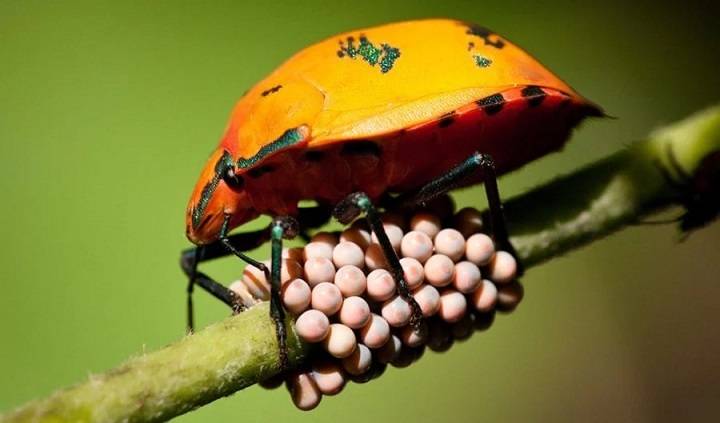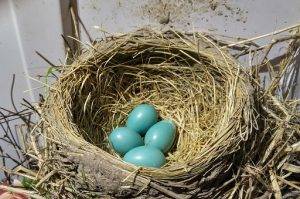Have you ever marveled at the diversity of animals that lay eggs but aren’t birds? While birds are the most well-known egg-laying creatures, a fascinating array of non-avian species with this unique reproductive trait exists.
In this comprehensive guide, we’ll explore the captivating realm of egg-laying animals, covering not only their biological wonders but also their natural habitats, physical characteristics, behavior, conservation status, and even the occasional consideration of keeping them as unconventional pets.
So, let’s embark on this enlightening journey into the lesser-known world of animals that lay eggs.
Natural Habitat and Distribution
Beyond the Bird’s Nest
Egg-laying animals have adapted to diverse environments around the globe. From aquatic habitats to terrestrial landscapes, these creatures display a remarkable range of adaptations for laying and protecting their eggs.
Mammals that Defy the Norm
Echidnas and Platypuses: Australia’s Monotremes
In the mammalian world, monotremes stand out as the only egg-laying group. Echidnas and platypuses, native to Australia, challenge the common perception of mammals giving birth to live young. These unique creatures have evolved to thrive in various habitats, including rivers, streams, and forested regions.
Reptilian Wonders
Turtles, Crocodiles, and Lizards
Reptiles encompass a diverse group of egg-laying animals. Turtles, with their protective shells, lay eggs in carefully selected nests. Crocodiles, exhibiting maternal care, guard their nests fiercely. Even lizards, from the smallest geckos to the formidable Komodo dragon, rely on eggs to reproduce.
Amphibians: Masters of Adaptation
Frogs and Salamanders
Amphibians, with their remarkable ability to inhabit aquatic and terrestrial environments, often lay eggs in water. Frogs lay gelatinous egg masses, while some salamanders display intricate courtship rituals before depositing their eggs in aquatic environments. Their life cycles involve fascinating metamorphoses from aquatic larvae to terrestrial adults.
Invertebrates: From Arachnids to Insects
Spiders, Insects, and More
Among the invertebrates, egg-laying is a widespread reproductive strategy. Spiders spin silk egg sacs to protect their eggs, while insects employ various methods, from solitary egg-laying to complex social structures. The diversity in reproductive strategies is staggering, ranging from the meticulous construction of termite mounds to the solitary efforts of a mother praying mantis.
Physical Characteristics
Egg Shapes, Sizes, and Shells
The diversity in egg characteristics is as vast as the array of egg-laying animals. From the small, leathery reptiles’ eggs to the hard-shelled birds’ eggs, each species has evolved adaptations suited to its ecological niche. The shape, size, and protective features of eggs often reflect the challenges faced by the parent and the specific needs of the developing embryo.
Behavioral Marvels
Parental Care and Survival Strategies
The reproductive behaviors of egg-laying animals are as varied as their habitats. Some species exhibit remarkable parental care, guarding eggs against predators or protecting vulnerable hatchlings. Others rely on camouflage, burying eggs in concealed locations to increase the chances of survival. The intricacies of nesting behaviors shed light on the evolutionary adaptations that ensure the continuation of each species.
Conservation Status
Egg-Laying Animals in a Changing World
Understanding the conservation status of egg-laying animals is crucial for preserving their ecological roles and maintaining biodiversity. Threats such as habitat loss, climate change, and human activities impact these creatures, making conservation efforts essential to survival. By recognizing their ecological importance, we can contribute to safeguarding the delicate balance of ecosystems worldwide.
Also Read:
- Exploring the Dazzling Beauty of the Golden Pheasant
- The Enigmatic Shoebill: Counting the Remaining Giants of the Wetlands
Unconventional Pets: Considerations and Ethics
Egg-Layers in Captivity
While the idea of keeping egg-laying animals as pets may seem unusual, it’s essential to approach this concept with a deep understanding of the species’ natural behaviors, habitat requirements, and ethical considerations. Some reptiles, amphibians, and invertebrates thrive in well-designed captive environments, but responsible ownership involves extensive research and adherence to ethical guidelines.
Egg-laying animals, far beyond the realm of birds, offer a glimpse into the extraordinary diversity of life on Earth. From the monotremes of Australia to the invertebrates that navigate complex ecosystems, these creatures showcase the versatility of reproductive strategies. As we delve into their worlds, let’s appreciate the marvels of adaptation, the intricacies of parental care, and the delicate balance that sustains life in its various forms.
So, the next time you encounter animals laying eggs, remember the vast array of species contributing to the rich tapestry of life, each with its unique story of survival and adaptation.



